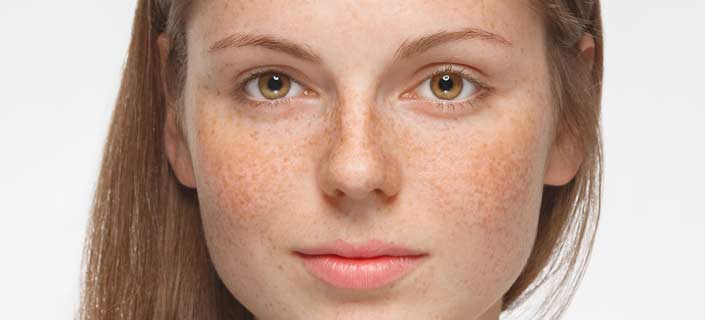SHARE THIS ARTICLE

General Public
What is Hyperpigmentation?: Types, Causes, Symptoms & Treatment
Jun 1, 2018
*Disclaimer: Information on Maylips.com is provided for informational purposes only. Self-medication is strictly prohibited. All aesthetic procedures should be provided by the licensed healthcare specialist after the consultation with the personal therapist. The information in this article should not be used for prescribing any medication for the beauty injections.
All brand and medication descriptions in the article are based on the personal opinion and are not endorsed by Maylips.com. The article content was not reviewed for medical validity. Use this article for information and not for a final decision on the procedure.
What is hyperpigmentation?
Freckles, dark spots, acne scars—while they are not medically threatening, these marks are often seen as a defect to a person’s aesthetic. These are commonly categorised as hyperpigmentation, a condition where darkening spots appear on the skin, especially in the facial region.
Types and causes of hyperpigmentation
Under the skin, the cells melanocytes produce melanin. Its main function, other than providing colour to the skin and hair, is to absorb ultraviolet rays from the sun, so as to protect the skin. However, prolonged exposure will cause an excess of melanin in spots as the UV light overstimulates the melanocytes. Inflammation and skin injuries such as acne vulgaris may also trigger the formation of deposits which resides as stubborn brown patches on the complexion.
A common type hyperpigmentation that occurs among elderly people is known as age spots, liver spots, or lentigines. They are dark, irregular shaped brown patches. A lentigo appears because of an accumulation of melanocytes in a selected area, which later exerts large amount of melanin. Fortunately, it is benign and usually revolves in areas that are exposed to the sun.
Another type is known as melasma. These large darkened patches on the face, hands, and other body parts are also infamously referred as “mask of pregnancy” and are explicitly caused by hormonal changes. It is noticeably prominent during the second or third trimester of pregnancy. Women who are not pregnant may also experience this from taking oral contraceptives, hormone replacement therapy, or under excessive sun exposure.
Small, flat, light-brown spots, or freckles, are usually prevalent in light-skinned individuals. They are hereditary traits that occur because of the overproduction of melanosome granules from the available melanocytes. These are speckled across the face, arms, and even some parts of the body. These spots become more apparent under prolonged sun exposure.
Post-inflammatory hyperpigmentation (PIH) often derives from the scarring of acne vulgaris. This causes a rampant discolouration and cosmetic damage to the face if it is not being attended with proper cleaning technique. The side effects may include concentrated pigment and darkening of the skin, called macules, that will take months to diminish.
Treating hyperpigmentation
Although these conditions do not pose any threat to the health, it may damage a person’s self-esteem. Fortunately, there are various ways to treat these conditions. There are various topical applications and solutions that can treat these spots in due time, such as hydroquinone, retinoids, and ascorbic acid. For severe spots, they can use chemical peels, dermabrasions, laser treatment, and if necessary, perform a biopsy for removal.
Hydroquinone is a topical skin-bleaching agent that reverses the lightening of the skin. It is available as 2% creams, emulsions, gels, lotions, and solutions available over the counter. Its mechanism is inhibiting the enzymatic conversion of tyrosine to DOPA in the melanocytes and subsequently interferes with the melanin transfer and production. This chemical is suitable for correcting melasma, freckles, lentigines, age spots, and acne scars.
In the cosmetics industry, retinoids such as tretinoin, adapalene, and tazarotene are popular chemicals used to remove mild to moderate acne scars. These are vitamin A analogues that initiate the production of procollagen, prevents dermal matrix degradation from UV exposure, and regulate epithelial cell growth. Available as creams, gels and liquid forms, retinoids can be integrated into the skincare routine by applying it once a day. However, sensitive skin may elucidate side effects such as dryness, pruritus (itching) and scaling.
Ascorbic acid, or vitamin C, is also a popular depigmenting agent that inhibits the action of enzyme tyrosinase and, consequently, melanin.
It is advisable for everyone to apply sunscreen or sunblock daily to minimise the direct exposure to sunlight and reduce the risk of hyperpigmentation. If your patients are looking for various ways to treat hyperpigmentation, consider offering speciality skincare products, such as those from ZO Skin Health.
*Disclaimer: Information on Maylips.com is provided for informational purposes only. Self-medication is strictly prohibited. All aesthetic procedures should be provided by the licensed healthcare specialist after the consultation with the personal therapist. The information in this article should not be used for prescribing any medication for the beauty injections.
All brand and medication descriptions in the article are based on the personal opinion and are not endorsed by Maylips.com. The article content was not reviewed for medical validity. Use this article for information and not for a final decision on the procedure.

